The 1938 Mercury dime’s value depends on mint mark, condition, and special features. The 1938-D (Denver) ranges from $4.60-$15.50 in circulated condition and $5.25-$2,250 uncirculated. The 1938-S (San Francisco) is worth $2-$10 circulated and up to $1,100 uncirculated. Philadelphia-minted coins (no mint mark) typically value $2-$10 circulated. Coins with full bands on the reverse command higher premiums, up to $2,400. Unlike later Roosevelt dimes, the 1938 Mercury dime has no major known errors. Professional grading is recommended for potentially valuable specimens, especially high-grade examples or those with distinctive features.
Finding a 1938 Mercury dime in your collection could mean holding anywhere from a few dollars to over two thousand dollars, depending on its mint mark and condition. These 86-year-old silver coins remain popular among collectors not just for their elegant Winged Liberty design, but for their tangible precious metal content and historical significance. Understanding the subtle differences between Philadelphia, Denver, and San Francisco strikes can significantly impact what your coin is actually worth in today’s market.
Breaking Down the Three 1938 Dime Varieties
The United States Mint produced Mercury dimes at three facilities in 1938, each leaving distinct characteristics that directly affect collector value. Philadelphia struck coins without any mint mark, while Denver added a small “D” and San Francisco stamped an “S” on the reverse, just to the left of the fasces bundle. Production numbers varied dramatically: Philadelphia minted 22,190,000 pieces, Denver produced 5,537,000, and San Francisco created 8,090,000 dimes that year.
The Denver mint mark appears as the scarcest regular strike, which explains its premium pricing in most grades. Collectors specifically seek the 1938-D because its lower mintage creates natural scarcity compared to the Philadelphia issue. The San Francisco variety falls between these two in both production numbers and typical market values, though exceptional specimens can command impressive prices at auction.
Current Market Values by Mint Mark and Condition
Circulated 1938 dimes without mint marks typically trade between two and ten dollars, reflecting their silver content plus a modest collector premium. These Philadelphia strikes remain the most common variety, making them ideal starter coins for new Mercury dime collectors. Worn examples in Good to Very Fine condition hover near melt value, currently around $1.75 based on silver spot prices, with slightly better preservation pushing values into the five to eight dollar range.
1938 No Mint Mark Value Table:
| Grade | Value Range |
|---|---|
| Good (G-4) | $2.00 – $3.00 |
| Fine (F-12) | $3.50 – $5.00 |
| Very Fine (VF-20) | $5.00 – $8.00 |
| Extremely Fine (EF-40) | $8.00 – $12.00 |
| About Uncirculated (AU-50) | $12.00 – $18.00 |
| Mint State (MS-60) | $20.00 – $35.00 |
| MS-65 | $85.00 – $150.00 |
| MS-67 | $450.00 – $800.00 |
The Denver issue commands stronger premiums across all condition levels. Circulated 1938-D dimes start at approximately $4.60 for well-worn specimens and climb to $15.50 for About Uncirculated examples showing minimal wear. This represents roughly double the value of comparable Philadelphia strikes, purely based on the lower survival rate from that 5.5 million coin mintage.
Uncirculated 1938-D dimes show dramatic value increases based on preservation quality. Entry-level Mint State coins graded MS-60 begin around $28.00, while premium MS-65 specimens typically sell between $180 and $350. The real excitement comes at the top end: MS-67 examples have sold for $2,250 through Heritage Auctions, with the finest known MS-68 specimen bringing even higher prices when it crosses the auction block.
San Francisco dimes from 1938 occupy middle ground in the value spectrum. Circulated pieces match Philadelphia pricing at two to ten dollars for everyday grades, while Mint State coins start at $25 for MS-60 and progress to $150-$275 for MS-65 quality. The highest graded 1938-S dimes in MS-67 condition have reached $1,100 at major numismatic auctions, making them worthy targets for registry set collectors.
The Full Split Bands Premium
Mercury dime specialists pay particular attention to the horizontal bands wrapped around the fasces on the coin’s reverse. When these bands show complete, unbroken separation at their center, the designation “Full Bands” or “FB” gets added to the grade. This detail indicates exceptional strike quality and preservation, transforming values significantly.
A standard 1938-D graded MS-65 might sell for $250, while the same date and grade with Full Bands designation jumps to $450-$650. At MS-67 levels, the differential becomes even more pronounced: a regular strike might bring $2,250, but an MS-67 FB example could command $2,400 or substantially more. The Full Bands designation typically adds 40-80 percent to a coin’s value, depending on the specific grade and mint mark.
Only about 15-20 percent of Mint State Mercury dimes qualify for the Full Bands designation, even among coins that appear sharp to the naked eye. Professional grading services like NGC and PCGS evaluate band separation under magnification, requiring complete definition of all horizontal lines at the center point. This rigorous standard makes FB examples genuinely scarce, justifying their market premiums.
Understanding Mercury Dime Errors and Varieties
Unlike the famous 1968 “no-S” Roosevelt dime proof that sells for over $20,000, the 1938 Mercury dime series lacks well-documented major errors. No missing mint mark varieties exist for this year, and dramatic doubled dies or repunched mint marks remain virtually unknown in the marketplace. This doesn’t mean errors are impossible, just that none have achieved widespread recognition among specialists.
Minor die varieties do exist for careful variety hunters. Some 1938 Philadelphia dimes show slight repunching of the date, visible under magnification as doubling in the digits. These carry modest premiums of $5-$15 over standard values in comparable grades. Similarly, minor die cracks, die clashes, and struck-through grease errors appear occasionally but rarely add more than 10-20 percent to a coin’s base value.
Off-center strikes represent the most collectible error type for 1938 dimes. A coin struck 5-10 percent off-center with full date visible might add $50-$150 to its value, while more dramatic 25-40 percent misalignments can bring $300-$600 depending on eye appeal. Completely blank planchets, struck on wrong planchet stock, or double strikes would command four-figure premiums, but authenticated examples essentially never appear on the market.
Collectors suspecting they’ve found a valuable error should seek professional authentication before getting too excited. Many perceived “errors” actually represent post-mint damage, environmental effects, or normal die wear patterns. Third-party grading services charge $20-$40 for basic authentication, a worthwhile investment before claiming discovery of a rare variety.
Professional Grading and Authentication Considerations
Raw 1938 dimes in average circulated condition don’t justify grading costs, since service fees typically exceed the coin’s value. However, any piece that appears to grade Extremely Fine or better deserves consideration for professional encapsulation. The $35-$50 grading fee becomes economically sensible when it could confirm an MS-65 Denver dime worth several hundred dollars rather than an overgraded AU-58 worth $25.
NGC and PCGS population reports reveal interesting scarcity patterns. As of early 2024, NGC has graded only 87 examples of 1938-D dimes at the MS-67 level, with just four pieces certified MS-68. For comparison, they’ve graded over 1,200 1938-D dimes at MS-65, showing how quickly rarity increases with each grading point. These population numbers directly influence auction results and dealer asking prices.
Third-party grading also provides crucial counterfeit protection. Chinese counterfeits of common-date Mercury dimes have appeared in recent years, typically cast rather than struck and showing telltale casting bubbles under magnification. Professional graders catch these fakes immediately, along with altered dates, added mint marks, and coins that have been artificially retoned or cleaned to simulate higher grades.
The return on grading investment proves strongest for Full Bands candidates. If you have an uncirculated 1938-D that shows sharp horizontal band separation, the $75 cost for PCGS or NGC grading with FB review could transform a $200 raw coin into a $600 certified example. Even if the coin doesn’t achieve FB designation, you’ve still confirmed its grade and protected your investment with third-party authentication.
Building Your 1938 Mercury Dime Collection
Starting a complete 1938 set requires just three coins but offers surprising depth for collectors at different budget levels. A basic circulated set costs $10-$30 total: one each of Philadelphia, Denver, and San Francisco in Fine to Very Fine condition. This represents an accessible entry point that provides genuine 90-percent silver coins with eight decades of history.
Intermediate collectors might target an all-Mint State set without Full Bands designations. Expect to invest $75-$150 for an MS-63 or MS-64 Philadelphia coin, $200-$400 for a comparable Denver piece, and $125-$250 for the San Francisco issue. This $400-$800 set delivers impressive visual appeal while avoiding the exponential costs of premium gem examples.
Advanced collectors pursuing a registry set need MS-66 or better coins, preferably with Full Bands. Budget $500-$900 for a premium Philadelphia specimen, $1,500-$2,500 for the key Denver coin, and $700-$1,200 for San Francisco. This elite-level set represents significant investment but holds strong potential for appreciation as population reports remain limited at these grade levels.
Maximizing Value When Selling Your 1938 Dimes
Local coin shops offer immediate liquidity but typically pay 60-75 percent of retail value for common circulated pieces. This works fine for basic examples worth under $20, where convenience outweighs maximizing every dollar. However, better-date pieces or Mint State coins deserve more consideration before accepting a quick cash offer.
Online marketplaces like eBay provide access to the broad collector market, where properly listed coins often realize 85-95 percent of retail guide values. Successful sellers photograph both obverse and reverse clearly, accurately describe grade and characteristics, and research completed listings to set competitive prices. Factor in selling fees of approximately 13-15 percent when calculating your net proceeds.
Major auction houses like Heritage, Stack’s Bowers, and Great Collections make sense for premium pieces worth over $500. These venues attract serious collectors willing to pay full retail or beyond for exceptional coins. Consignment fees typically run 10-20 percent depending on the lot’s value, but the exposure to qualified buyers often produces results exceeding what you’d achieve through local channels.
Timing matters when liquidating collectible coins. The market traditionally strengthens during fall and winter months when major conventions occur and year-end buyers seek portfolio additions. Summer months often see softer demand and prices, particularly for mid-range material. Patient sellers willing to wait for optimal timing frequently capture 10-15 percent additional value.
Smart Strategies for Acquiring Quality Examples
Building a collection requires balancing cost with quality. Many beginners overpay for overgraded raw coins or settle for problem pieces that will never appreciate. The most successful collectors learn to evaluate condition accurately, understand what constitutes original surfaces versus cleaning or artificial toning, and recognize when asking prices exceed reasonable market levels.
Coin shows provide opportunities to examine multiple examples side-by-side while negotiating directly with dealers. Bring a 5x to 10x magnifying loupe to check for Full Bands separation, examine luster quality, and spot potential cleaning or other issues. Dealers often discount prices 10-15 percent at shows compared to their online listings, especially later in the day when they’re motivated to reduce inventory.
Online dealers with strong reputations offer convenience and selection that physical shows can’t match. Look for sellers who provide clear return policies, detailed photographs, and accurate grading. Certified coins remove much of the grading uncertainty, though you’ll pay premium prices for that third-party guarantee. Many collectors find success buying raw coins at collector-to-collector prices, then submitting promising pieces for certification themselves.
Building relationships with established dealers pays dividends over time. Regular customers often get first access to fresh acquisitions before they reach public listings. Dealers also provide valuable education, helping you understand market trends, identify opportunities, and avoid costly mistakes. This mentorship proves especially valuable when stepping up from common dates to scarcer, more expensive pieces.
How These 1938 Dimes Fit Into Numismatic History
The 1938 Mercury dime represents the penultimate year of Adolph Weinman’s beloved design, which debuted in 1916 and concluded in 1945. These late-series coins benefited from refined hub details and generally strong strikes, making high-grade examples more achievable than earlier dates where soft strikes plagued certain mint marks.
Collectors appreciate 1938 issues because they’re genuinely old without being prohibitively expensive or rare. The Denver mint mark variety offers meaningful scarcity at reasonable prices, while the Philadelphia and San Francisco pieces remain accessible for modest budgets. This balance makes the year ideal for collectors who want substantive coins without the six-figure price tags of key dates like the 1916-D or 1942/1 overdate.
The 90-percent silver composition means every 1938 dime contains approximately 0.07234 ounces of pure silver. At current precious metal prices, this provides a $1.75 floor value regardless of condition or mint mark. This tangible metal backing offers downside protection that paper collectibles simply can’t match, adding investment appeal beyond pure numismatic interest.
Finding the Right Resources for Accurate Valuations
Price guides provide useful starting points but shouldn’t be treated as gospel. The “Official Red Book” published annually by Whitman offers conservative retail estimates that often lag actual market prices by 6-12 months. Online price guides like NGC Coin Explorer and PCGS Coinfacts update more frequently, pulling data from auction results and dealer transactions to reflect current market conditions.
Auction archives provide the most accurate pricing information for specific dates and grades. Heritage Auctions maintains a searchable database of realized prices going back decades. Searching for “1938-D dime MS-67” returns actual sale prices with photographs, allowing direct comparison to coins you’re considering buying or selling. This real-world transaction data beats theoretical guide book values every time.
Dealer networks and online forums connect you with specialists who focus specifically on Mercury dimes. The Collectors Universe forums host knowledgeable collectors who freely share information about varieties, grading nuances, and current market trends. Facebook groups dedicated to Mercury dimes provide similar resources, though verify information against multiple sources before making significant financial decisions.
Taking Action With Your 1938 Dimes
Whether you’ve inherited a collection, discovered coins in circulation, or are building a set intentionally, start by carefully examining what you have. Check the reverse below the fasces for mint marks, assess overall condition honestly, and look for that Full Bands separation that dramatically affects value. Even common Philadelphia pieces in worn condition hold collectible and silver value worth preserving properly.
Store your coins in appropriate holders that prevent environmental damage while allowing viewing. Avoid touching surfaces with bare fingers, which deposit oils that accelerate toning and potentially reduce grades. For valuable pieces, consider safe deposit storage or a home safe rather than leaving them in desk drawers where they might get spent accidentally or stolen.
The 1938 Mercury dime offers something for collectors at every level, from beginners seeking affordable vintage silver to specialists pursuing finest-known registry pieces. Understanding the mint mark differences, grading standards, and market dynamics positions you to make informed decisions whether buying, selling, or simply enjoying these elegant pieces of American numismatic heritage.
You may be interested:
- 1859 Indian Head Penny Coin Value Complete Errors List And No Mint Mark Worth Guide For Collectors
- 1911 V Nickel Coin Value Guide Complete Errors List And No Mint Mark Worth Today
- 1902 Dime Coin Value Complete Errors List With O S And No Mint Mark Worth Guide
- 1788 Quarter Coin Value Complete Guide Errors List And D S P Mint Mark Worth Revealed
- 1776 To 1976 Bicentennial Half Dollar Coin Value Complete Errors List And What Your D S And No Mint Mark Coins Are Actually Worth
- 1990 Penny Coin Value Errors List How D S And No Mint Mark Pennies Are Worth Thousands Of Dollars

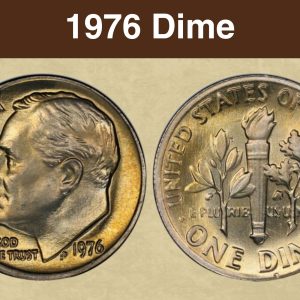
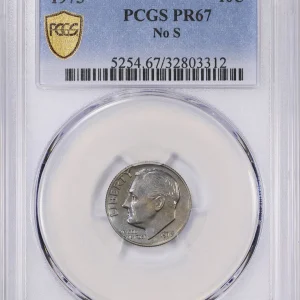
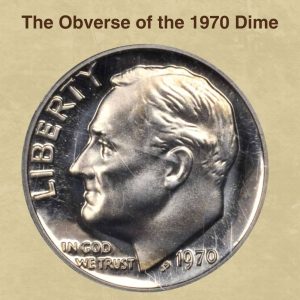
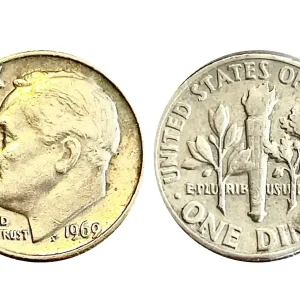
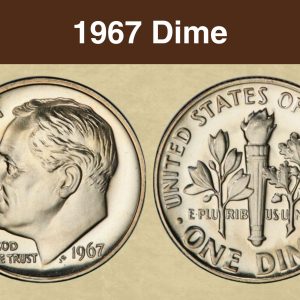
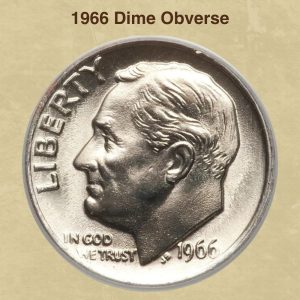
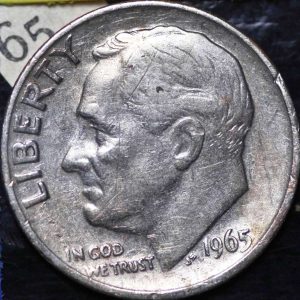
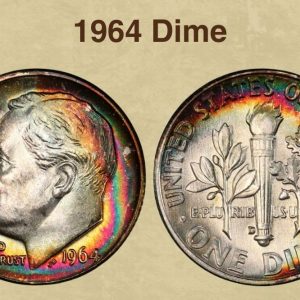
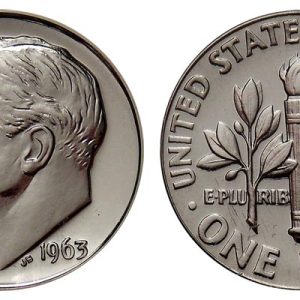
How much is a 1938-S Mercury dime worth?
A 1938-S mercury dime’s value ranges from about $4.50 to $14.50 in circulated condition, up to $725 or more for high-grade, uncirculated coins. While the 1938-S is common and plentiful in all grades, its value increases significantly with better condition, with the highest prices reserved for flawless, professional-grade specimens like an MS-67 or higher.
What errors to look for on dimes?
When looking for valuable dime errors, check for coins with a double die obverse, where features like the date or motto are doubled, as well as errors in the striking process, such as an off-center strike or a broadstrike where the collar is missing. Other errors include missing or clipped planchets, missing clad layers, or striking through debris like cloth (a strikethrough error ).
What is the most wanted Mercury dime?
The most sought-after Mercury dimes are the 1916-D, the 1921, the 1921-D, and the 1942/1 overdate varieties. Other key dates include the 1926-S, 1919-D, and 1945. Value depends heavily on a coin’s condition, with higher-grade coins commanding significantly higher prices.
What year is the $2000000 dime?
1894-S Barber dime. The 1894-S Barber dime is a dime produced in the United States Barber coinage. It is one of the rarest and most highly prized United States coins for collectors, along with the 1804 dollar and the 1913 Liberty Head nickel.